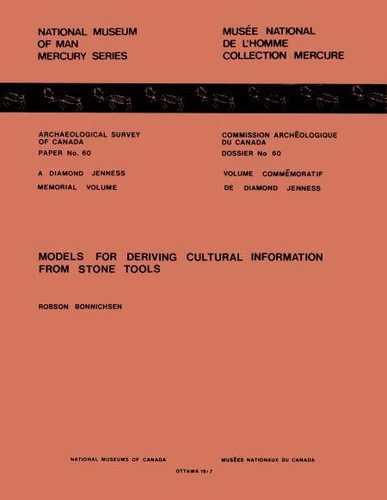Mercury
Models for Deriving Cultural Information from Stone Tools
Par : Formats :
Disponible dans votre compte client Decitre ou Furet du Nord dès validation de votre commande. Le format PDF est :
- Compatible avec une lecture sur My Vivlio (smartphone, tablette, ordinateur)
- Compatible avec une lecture sur liseuses Vivlio
- Pour les liseuses autres que Vivlio, vous devez utiliser le logiciel Adobe Digital Edition. Non compatible avec la lecture sur les liseuses Kindle, Remarkable et Sony
 , qui est-ce ?
, qui est-ce ?Notre partenaire de plateforme de lecture numérique où vous retrouverez l'ensemble de vos ebooks gratuitement
Pour en savoir plus sur nos ebooks, consultez notre aide en ligne ici
- Nombre de pages360
- FormatPDF
- ISBN1-77282-057-1
- EAN9781772820577
- Date de parution01/01/1977
- Protection num.pas de protection
- Taille87 Mo
- Infos supplémentairespdf
- ÉditeurMercury-Mercure
Résumé
A model relating human cognition to the decisions made in tool manufacture is advanced as a substitute for those approaches to artifact classification which rely only on morphology. The model is related to experiments designed to link specific input conditions (in stone fracture) with particular output features (flake and core attributes) and is used to resolve processual questions concerning projectile points from four Palaeo-Indian localities.
Published in English.
Published in English.
A model relating human cognition to the decisions made in tool manufacture is advanced as a substitute for those approaches to artifact classification which rely only on morphology. The model is related to experiments designed to link specific input conditions (in stone fracture) with particular output features (flake and core attributes) and is used to resolve processual questions concerning projectile points from four Palaeo-Indian localities.
Published in English.
Published in English.



